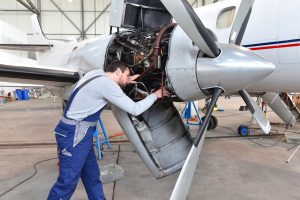
Aircraft Insurance Tips and Tricks
Welcome to this week’s edition of “Clearance to Fly.” In the aviation world, insurance cycles mirror the broader industry’s ups and downs. After years of
The aviation industry is a complex field to navigate, and often small details can slip through the cracks, such as jet cards and private jet memberships, and the business models that define them. The importance of understanding the difference between jet cards and memberships, the benefits and costs, and their actual value will be a helpful to any pilot.
In aviation, many frequent flyers opt for a jet card or membership. Let’s define both of these terms, because they function differently in the economics of how the programs are administered.
In the traditional definition of a Jet Card, think of it like a pre-paid debit card for future flights on a particular type of aircraft. You pay the operator of the jet card a pre paid deposit in exchange for future flights at a “favorable rate.” This would make sense, right? You’re hedging your bets in the future.
Unfortunately, it’s sometimes just clever marketing for chartered trips.
With the exception of fractional operators like Netjets, Airshare, or Volato, most jet card operators don’t own and operate their own fleets. This means they go to the open market to find your flight. On many jet cards, you will actually pay above market rate on an hourly basis by 5-15% depending on the class of aircraft.
Know what you’re actually paying for. Some jet cards and memberships are in disguise, and the lump sum up front is not for actual hours flown. For instance, there is a jet card that costs $110,000 for 10 days of access to the card. You then pay $4,400 per hour to fly on a Phenom 300. Or, on the Jettly card, you pay 6 figures up front for 100 hours, which locks in an hourly rate that you will pay per trip. When doing a calculation, make sure you’re taking the initial upfront cost into your hourly consideration, as many of these jet cards are actually more expensive per hour than the open market.
Many are looking for convenience when booking. You will enjoy a dedicated booking team, clear communication, and good customer service (at least that’s what they promise). You also may be able to lock in rates at a discount, but you are really just paying for convenience. Before purchasing a jet card, it’s recommended to subscribe to Private Jet Card Comparisons (this is an affiliate link). For $250 before you make a 6 figure investment, it seems like a no-brainer.
Some popular jet card providers (none of these are affiliate links):
Jet Cards Disguised as “Memberships”
In traditional private jet memberships, you’ll pay a monthly or annual fee to maintain your access to the private flights. The one everyone knows about is Wheels Up, with pricing starting at an initiation fee of $2,995 and annual dues of $2,495. You don’t actually have any rate lock or guaranteed dates with this membership and it’s an expensive way to access an app that allows you to book flights.
The promise is that members get access to discounted rates or locked in rates based on paying some sort of annual premium. This became very popular during the pandemic, because private aviation has experienced so many new entrants that they could charge whatever they wanted to and people would pay it. There’s a popular saying that goes, “A large group of people are going from Wheels Up back to Comfort Plus.”
The marketing language will say that a membership is “perfect for someone flying 25+ hours per year.” The real reason is they don’t have to acquire you as a customer again in the future because you are now committed to their program for a period of time.
These memberships sometimes do and sometimes don’t include a required lump sum on deposit. You may get preferential treatment if you do place some sort of “flight deposit” ahead of time.
Some membership operations out there:
Again, when looking in to a membership, be sure to calculate your membership fees across how many hours you’ll actually be flying. This is how you calculate your effective rate.
They both traditionally operate under Part 135, which is an FAA (Federal Aviation Administration) regulation which has specific rules around pilot training and qualification, operational standards, and other regulations designed to make it safer for the general public. Part 135 is defined as non-scheduled, commercial aircraft operations. This means you are hiring the aircraft and crew for an on-demand trip that wasn’t regularly scheduled. This is the same regulation that governs a trip that you charter through a charter broker. If you want to go deeper on this, you can read more about it here.
Any jet card or membership that requires a large deposit for flight hours comes with risk. In the example of Avantair, they offered an elite level of membership that cost $150,000. That money is all gone now, and there are around 10 members suing the operator for their money back. You must be confident in the operational longevity of an operator to put any sort of deposit down.
Do your research and make sure that it is a trusted brand with seasoned operators. There is a laundry list of providers in the private aviation space that have promised the world, but have left many holding the bag. There are bad actors out there that are looking to take advantage of people with the means to fly private. Always be wary of a deal that is too good to be true, because chances are it probably is.
If you are looking to fly private and have someone who is going to get truly market pricing, a good broker is going to be your best bet. An experienced charter broker is going to have a network of operators that fits your trip criteria and can find true market pricing. As we come down off of the post-pandemic high, there are going to be operators that want to put demand into their airplane. A good charter broker will be able to find that for you.
Aviation is a niche market, and there has yet to be a good technology aggregator of supply and demand in the charter market. Wheels Up promised to investors it would, but even with their scale they’re not able to achieve the level of customer service and the market pricing demanded by today’s charter customers.
If you’re interested in reading articles similar to this, check out our article Share a Jet: The Secrets Behind Wet Leasing and Dry Leasing.
Speak with an aviation finance professional today to get your real rate on your next aircraft purchase!

Welcome to this week’s edition of “Clearance to Fly.” In the aviation world, insurance cycles mirror the broader industry’s ups and downs. After years of

Aircraft Buying Insights: Why You Need Escrow Welcome back to “Clearance to Fly,” your go-to newsletter for all things aircraft purchasing and financing. This is our second

If you’ve followed any of FLYING Finance’s guides for picking your first aircraft, you might also be thinking about the next steps. What does ownership look

At Flying Finance, we’re your trusted partner in aviation financing. With a deep understanding of the aviation industry and a commitment to making your dreams take flight, we provide tailored financing solutions for business jets, piston aircraft, turboprop aircraft, helicopters and more. A financier who understands aviation.
405 Cherry Street, Chattanooga, TN 37402
© 2025 Flying Finance. All rights reserved. Privacy Policy